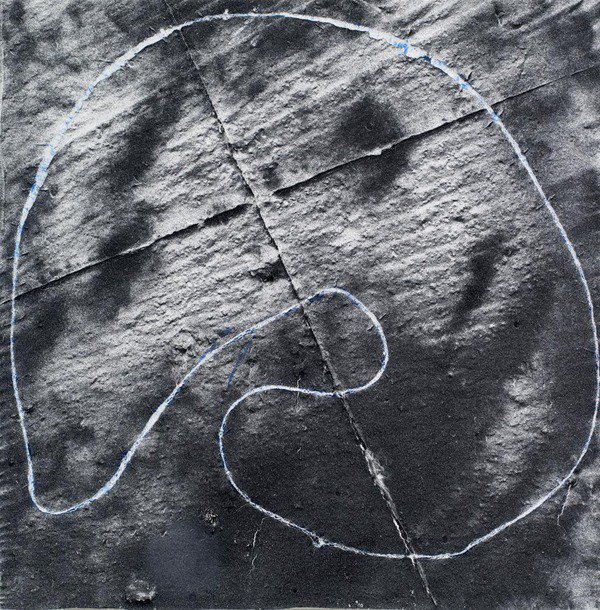Jack Whitten
dal 25/10/2012 al 30/11/2012
Segnalato da
25/10/2012
Jack Whitten
Zeno X Gallery (old venue), Antwerp
Loops. Most works contain a loop as seen before in other recent paintings. Some are closed, some are broken and some seem to meet at a point we can't see anymore. Everyone has a loop in his life, we exist and move to different places and go to somewhere no one knows.

Zeno X Gallery is proud to present a second solo exhibition with Jack Whitten (°1939, Bessemer). Compared with
his previous show, in which works on paper and monumental paintings were the focus, he now brings a selection
of more intimate works. A new shift in his oeuvre emerges.
Jack Whitten was raised in Alabama, during a period where it was hard for people with Afro-American roots. They
were constantly confronted with exclusion, ignorance and inequality. As a young man Whitten supported strongly
Martin Luther King and demonstrated for the universal human rights. Due to growing violence in the Civil Rights
Movement, he took some distance of the revolt. He started a pre-med education and was an Air Force ROTC
cadet at the Tuskegee Institute. In 1960 he moved to New York to attend art courses at Cooper Union. He met a
lot of artists but one had a great influence on his early work, Willem De Kooning. Also the works by Jackson
Pollock, who deceased years before, was important to him.
Looking back at the sixties, Jack Whitten incorporated the legacy of Abstract Expressionism and mixed it with
figuration. It was a period in which he researched his roots, his identity and his dreams but it was also a way to
express his admiration for friends, family and meaningful public figures who passed away. Beginning the
seventies his artistic developments became more personal and unique. He created a specific approach to
painting where he abandoned the obvious presence of the hand. Instead he started using self-made and found
tools, one was called the developer, to apply paint on canvas.
The experiment with paint, surfaces and texture
turned out to be his main focus and figuration completely disappeared. He started spreading out the paint in one
linear movement. Something we see also in the work of Gerhard Richter but ten years later. Painting becomes
more and more an intensive process of research and a means to honor and remind meaningful people who
passed away. During the eighties Whitten approaches paint as a metaphor for skin. In this period he starts to
realize castings of paint and explores the sculptural quality of paintings by using the technique of collage amongst
many others.
The city becomes his field and his source for what he calls 'Urban Abstractions'. Later, in the
nineties, he intensifies the sculptural dimension in his works by cutting plates of paint into little mosaics. The
process of construction, deconstruction and reconstruction gains in importance. A clear influence of ancient
architecture and murals can be noticed in those works.
Recently he started casting paint in one surface and attaches it on a canvas or panel. He experiments with the
texture of the surface, which almost resembles to a cosmic landscape. It could be parts of the moon. Here his
chemical attraction to photography substantiates.
Most works of this show, contain a loop as seen before in other
recent paintings. Some are closed, some are broken and some seem to meet at a point we can't see anymore.
Everyone has a loop in his life, we exist and move to different places and go to somewhere no one knows.
Jack Whitten participated already early in some important shows such as 'Annual Exhibition of Contemporary
American Painting' (1969,1972) at the Whitney Museum of American Art in New York and 'Afro-American
Abstraction: An Exhibition of Contemporary Painting and Sculpture by Nineteen Black American Artists’ (1980) at
the Institute for Art and Urban Resources and P.S.1 Center for Contemporary Arts in New York. In 1974 he had
his first solo museum exhibition at the Whitney Museum of American Art in New York. More recently, in 2007, a
solo show was on view at P.S.1 Contemporary Arts Center in New York and in 2008 he was at Atlanta
Contemporary Art Center with his solo 'Memorial paintings'. Many solo and group exhibition preceded and
followed. Currently a retrospective exhibition is being organized. The Museum of Contemporary Art in San Diego
will open this travelling exhibition in 2014.
His work is already part of the collection of The Museum of Modern Art (MOMA) in New York, The Whitney
Museum in New York, The Studio Museum in Harlem, The Metropolitan Museum and the Museum for
Contemporary Art Chicago, among many others.
Zeno X Gallery
Leopold De Waelplaats 16, Antwerp
Hours: Wednesday until Saturday: 2 – 6 pm
Free Admission



